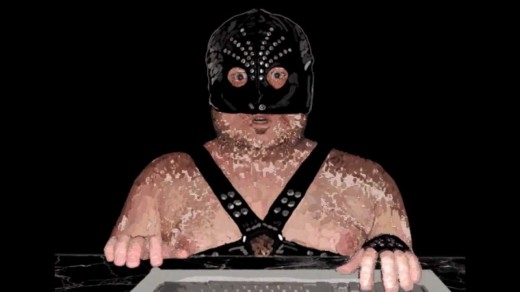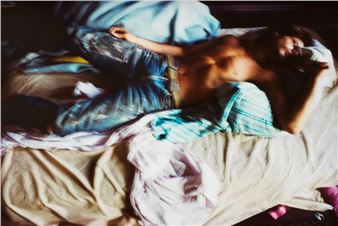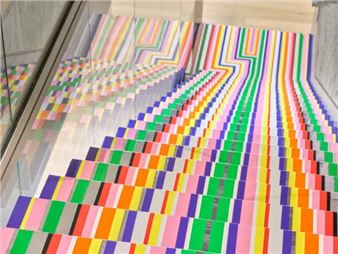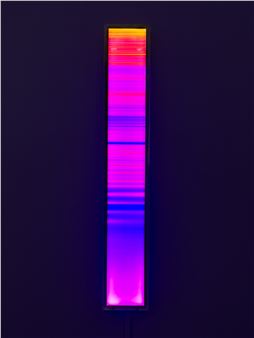Terminal 2.0
Terminal is a four-part installation project that examines single
user interfaces, and the influence of technology on the adaptation of
new artistic forms. The project addresses itself to an idea of what
different hardware units, operating systems, and user environments have offered
to artists and to the viewers, readers or users of their work. Each
iteration of the project considers a touchstone in computer
interfacing. Conceived as an exhibition in four parts, the project utilizes
a single-user space at Western Front – our former ticket booth/reading room – to
offer an intimate viewing experience that works away from the traditional
spatial paradigm of a white cube.
Terminal 2.0 takes up the graphical user interface
environment of the Commodore Amiga as a space that has inspired image creation
and leading to digital animation. The Amiga is a family of personal
computers that was sold by Commodore in the 1980s and 1990s. This consumer
market machine has a custom chipset with graphics and sound capabilities , and a
multitasking operating system. The Amiga was sold as a gaming and working
computer, and the adoption of the system was projected to be creative. Andy
Warhol famously participated in an Amiga demo, painting a digital portrait of
Debbie Harry in front of a crowd of enthusiasts.
With a glance at the technical nostalgia inherent in charting such early
products, this iteration of Terminal asks what artists consider to be worth
keeping from previous digital environments. The works created using this
environment were largely facilitated by the use of an emulator version of Deluxe
Paint, a bitmap graphics editor launched with the Amiga 1000. Under the much
more versatile conditions of contemporary computer use, and tailored to
individual processes and needs, artists such as Barry Doupé, Mark Pellegrino and
Amy Lockhart have taken up the style of spatially mapped array of pixels,
creating heavily stylized simplified animations that continue to refer to a
previous era of digital image creation. Marisa Olson is drafted into the
project as a material interloper, to complicate the preciousness that might be
ported along with using this idiosyncratic technology. Her Time
Capsule of an Amiga terminal takes the place of a functioning unit,
signalling the failure of the original Amiga machine to keep up with the
artists’ imagination of where its contents might lead.

Terminal is a four-part installation project that examines single
user interfaces, and the influence of technology on the adaptation of
new artistic forms. The project addresses itself to an idea of what
different hardware units, operating systems, and user environments have offered
to artists and to the viewers, readers or users of their work. Each
iteration of the project considers a touchstone in computer
interfacing. Conceived as an exhibition in four parts, the project utilizes
a single-user space at Western Front – our former ticket booth/reading room – to
offer an intimate viewing experience that works away from the traditional
spatial paradigm of a white cube.
Terminal 2.0 takes up the graphical user interface
environment of the Commodore Amiga as a space that has inspired image creation
and leading to digital animation. The Amiga is a family of personal
computers that was sold by Commodore in the 1980s and 1990s. This consumer
market machine has a custom chipset with graphics and sound capabilities , and a
multitasking operating system. The Amiga was sold as a gaming and working
computer, and the adoption of the system was projected to be creative. Andy
Warhol famously participated in an Amiga demo, painting a digital portrait of
Debbie Harry in front of a crowd of enthusiasts.
With a glance at the technical nostalgia inherent in charting such early
products, this iteration of Terminal asks what artists consider to be worth
keeping from previous digital environments. The works created using this
environment were largely facilitated by the use of an emulator version of Deluxe
Paint, a bitmap graphics editor launched with the Amiga 1000. Under the much
more versatile conditions of contemporary computer use, and tailored to
individual processes and needs, artists such as Barry Doupé, Mark Pellegrino and
Amy Lockhart have taken up the style of spatially mapped array of pixels,
creating heavily stylized simplified animations that continue to refer to a
previous era of digital image creation. Marisa Olson is drafted into the
project as a material interloper, to complicate the preciousness that might be
ported along with using this idiosyncratic technology. Her Time
Capsule of an Amiga terminal takes the place of a functioning unit,
signalling the failure of the original Amiga machine to keep up with the
artists’ imagination of where its contents might lead.

 ARTISTS
ARTISTS











